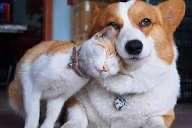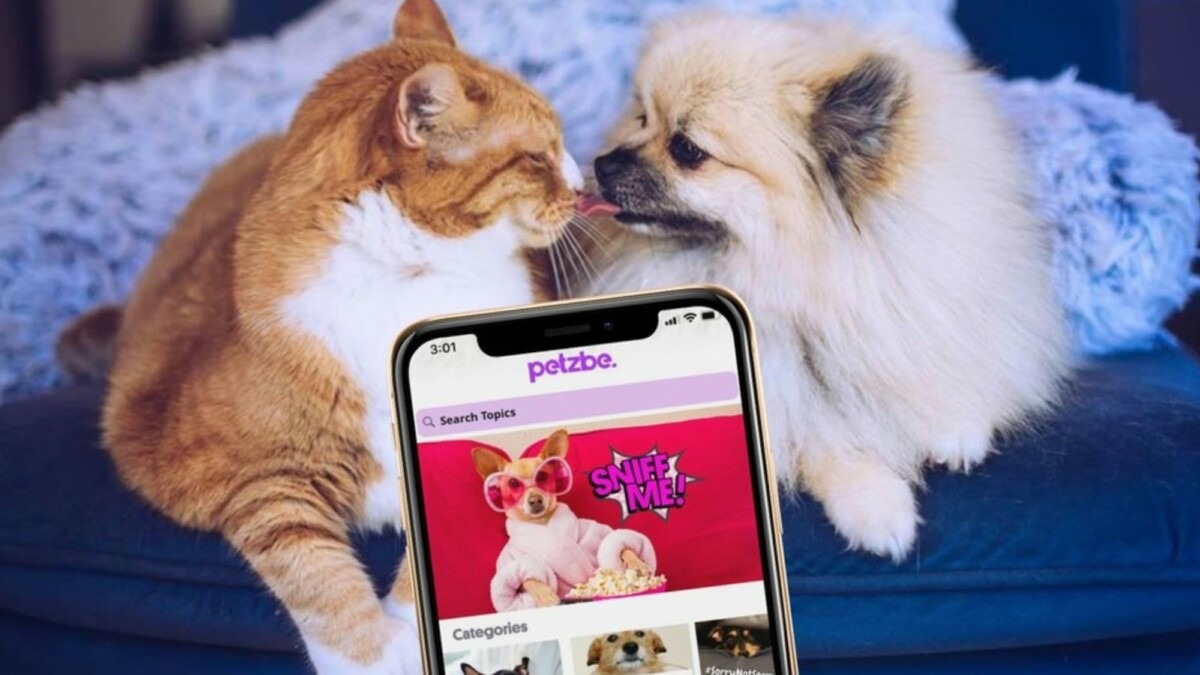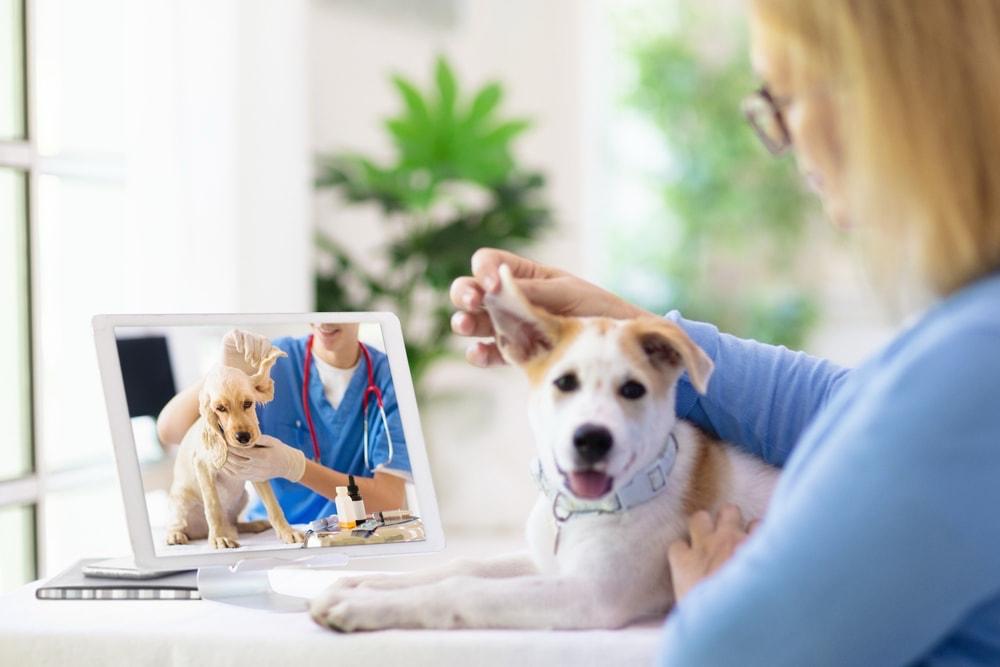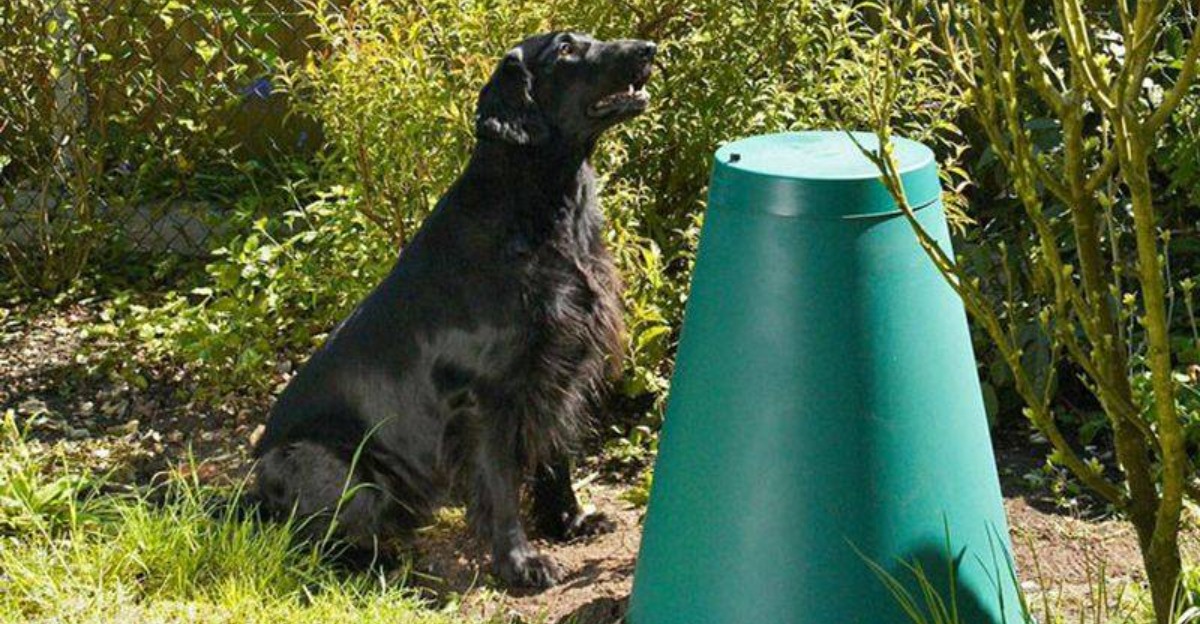
Cross-species friendship stories (e.g. dog & bird / cat & rabbit) – what works & what to watch.
Exploring Heartwarming Cross-Species Friendships: From Dogs Befriending Birds to Cats Bonding with Rabbits – Understanding What Makes These Unlikely Bonds Work, How Early Socialization, Temperament, and Human Supervision Play a Role, and What Risks and Challenges Pet Owners Should Watch For to Ensure Safe, Nurturing, and Emotionally Rewarding Relationships Between Animals of Different Species.
🐶 Pet Star
47 min read · 1, Oct 2025

Introduction
In the natural world, animals often stick to their own kind for companionship, survival, and social needs. Yet, in human households, we occasionally witness heartwarming stories of unlikely bonds: a dog befriending a bird, a cat curling up beside a rabbit, or even a horse adopting a goat as its best friend. These cross-species friendships defy conventional expectations and show us that animals are capable of affection, companionship, and even empathy that transcends species boundaries.
However, as beautiful as these relationships can be, they also come with unique challenges. Differences in natural instincts, dietary needs, communication styles, and predator-prey dynamics mean that not every cross-species friendship will thrive safely. Pet owners must carefully monitor and facilitate such bonds to ensure both animals’ wellbeing.
This article explores famous real-life cross-species friendships, the psychology behind these relationships, the risks involved, and practical advice for pet owners hoping to foster or maintain such bonds at home.
Famous Cross-Species Friendship Stories
1. Dog and Bird: The Playful Duo
One of the most popular cross-species bonds is between dogs and birds. Dogs, known for their playful and protective natures, sometimes form deep connections with parrots, cockatiels, or even chickens. Viral stories showcase dogs gently carrying their feathered friends around or sitting beside them during mealtimes.
For example, a Labrador named Max gained online fame when his family parrot, Charlie, became his constant companion. Charlie would perch on Max’s back during walks in the garden, while Max showed remarkable patience, never snapping at his feathered friend.
What works here:
- Labradors and similar breeds are known for their gentle temperament.
- Birds are intelligent, curious, and capable of forming strong attachments to animals that show no aggression.
What to watch:
- Birds are fragile; one wrong paw swipe can cause serious harm.
- Dogs may accidentally injure birds during rough play.
2. Cat and Rabbit: The Gentle Companionship
Cats are natural hunters, and rabbits, in the wild, would normally be prey. Yet, when raised together or introduced under supervision, cats and rabbits can form surprising friendships.
A viral example is the story of Tom, a domestic shorthair cat, and Snowy, a fluffy white rabbit. They were introduced in the same household cautiously. Over time, Tom’s predatory instincts softened, and he began grooming Snowy like a fellow cat. Snowy, in turn, showed no fear and often cuddled next to Tom during naps.
What works here:
- Rabbits are social creatures and crave companionship.
- Cats, especially when well-fed and raised in nurturing homes, may not view rabbits as prey but as friends.
What to watch:
- Cats may still swipe with claws when startled.
- Rabbits are easily stressed; a sudden aggressive cat reaction can be traumatic.
3. Dog and Horse: A Bond of Respect
Farm stories often feature strong bonds between dogs and horses. Dogs guard the stables, follow horses on trails, and even share affectionate moments. One famous friendship involved a Border Collie named Jack and a horse named Star. Jack would herd Star gently back to the barn at dusk and often rested beside him after long days.
What works here:
- Horses are herd animals and naturally accept other companions.
- Dogs, especially working breeds, bond well with large animals they are tasked to protect.
What to watch:
- Size difference: A horse can unintentionally injure a dog with a kick.
- Feeding times should be separated to avoid food aggression.
4. Goat and Donkey: The Farmyard Best Friends
Goats and donkeys have been seen forming strong partnerships in rescue centers and farms. Their companionship is often rooted in shared space and mutual comfort. A case in point is a rescue center where a lonely donkey refused to eat until paired with a goat, after which both thrived together.
What works here:
- Both species are herd-oriented and thrive with company.
- They share somewhat similar grazing habits.
What to watch:
- Goats can be mischievous and may irritate donkeys.
- Differences in nutritional requirements must be managed.
Why Do Cross-Species Friendships Happen?
Cross-species friendships often result from shared environments, social needs, and emotional recognition.
- Shared Social Needs
- Animals like rabbits, goats, dogs, and horses are social by nature. When their usual species companions are absent, they often seek comfort in others around them, even if from another species.
- Early Socialization
- Animals raised together from a young age are more likely to form lasting bonds. A puppy raised alongside a kitten or chick often sees them as part of its “pack” or “family.”
- Non-Threatening Temperaments
- Gentle, patient animals are more likely to accept others. Breeds known for aggression may struggle with such relationships.
- Human Mediation
- Pet owners play a huge role. By supervising interactions, discouraging aggression, and reinforcing positive behavior, humans can shape these friendships.
What Works in Cross-Species Friendships
- Supervised Introductions: Slowly introducing pets in controlled settings prevents stress and aggression.
- Neutral Territory Meetings: Meeting in spaces where neither animal feels territorial reduces tension.
- Positive Reinforcement: Rewarding calm and friendly interactions with treats encourages bonding.
- Respect for Personality: Not all animals are suited for interspecies bonds. Owners must recognize when a pet is disinterested or uncomfortable.
What to Watch For: Risks and Challenges
- Predator-Prey Instincts
- Cats and dogs have hunting instincts. Even playful chasing may traumatize or injure smaller animals like birds, rabbits, or rodents.
- Disease Transmission
- Some species may carry parasites or illnesses that affect others. For example, rabbits can carry Pasteurella, which may infect cats or dogs.
- Dietary Conflicts
- Animals may eat foods harmful to their new friend (e.g., dogs eating rabbit pellets or birds nibbling on cat food).
- Stress and Anxiety
- One animal may thrive while the other feels unsafe. Owners must watch for signs of fear, such as hiding, excessive grooming, or aggression.
- Unsupervised Time
- Even if two animals seem bonded, leaving them unsupervised—especially in early stages—can be risky.
Practical Tips for Owners
- Know Your Pets’ Natural Instincts: Research species-specific behavior before attempting introductions.
- Start Slowly: Use barriers like cages or baby gates at first.
- Observe Closely: Watch for body language such as relaxed ears (positive) versus growling, hissing, or raised fur (negative).
- Separate Feeding Areas: Prevent food aggression and accidental diet swapping.
- Provide Safe Retreats: Ensure each pet has a space to retreat if stressed.
- Celebrate Small Wins: Don’t rush cuddling or play. Even peaceful coexistence is a success.
The Emotional Power of Cross-Species Friendships
Beyond safety and care, these friendships offer something deeply meaningful. For the animals, companionship reduces loneliness, stress, and boredom. For humans, watching such bonds can be healing, inspiring lessons about tolerance, kindness, and empathy.
Stories of a dog protecting a chick, a cat grooming a rabbit, or a horse nudging a goat remind us that love and companionship know no species boundaries.
Cross-species friendships, those unlikely bonds between animals of different species such as dogs and birds, cats and rabbits, or even horses and goats, have fascinated humans for centuries because they reveal something profound about the capacity for affection and companionship beyond instinctual boundaries; while in the wild most animals stick to their kind for survival and social needs, in domestic or controlled human environments we often see extraordinary partnerships blossom, whether it is a Labrador carrying a parrot on its back, a cat grooming a rabbit as though it were another feline, or a donkey and goat refusing to be separated; these friendships, however heartwarming, are not without challenges and require careful management to ensure the wellbeing of all involved. Famous examples include the case of Max the Labrador and Charlie the parrot who became inseparable, with Charlie perching on Max’s back during walks and Max showing remarkable gentleness, or Tom the cat and Snowy the rabbit who, after cautious introduction, began napping together with Tom even grooming Snowy like a fellow cat, or Jack the Border Collie and Star the horse who shared daily routines on a farm, with Jack herding Star back to the barn and resting beside him; in all these cases, the success stemmed from patience, gentle temperaments, and environments where both animals felt safe. But what exactly drives such friendships? Research and observation suggest four major factors: shared social needs, since many animals like dogs, rabbits, and goats crave companionship and will seek it wherever available; early socialization, because animals raised together from youth often regard one another as family regardless of species; non-threatening temperaments, since some breeds or individuals are naturally calm and open to bonding; and human mediation, with pet owners supervising introductions, rewarding calm behavior, and providing safety boundaries. Despite their charm, these bonds demand vigilance due to risks including predator-prey instincts (cats and dogs may still chase or nip smaller companions like birds or rabbits even in play), disease transmission (certain parasites or bacteria can pass between species, e.g., rabbits carrying Pasteurella that can infect cats and dogs), dietary conflicts (dogs eating rabbit pellets or birds consuming cat food could be harmful), stress and anxiety (one animal may thrive while the other feels unsafe, showing signs such as hiding or aggression), and the danger of leaving them unsupervised before trust is fully developed. Owners who wish to encourage such friendships must follow key guidelines: know the natural instincts of both species, start introductions slowly with barriers like cages or baby gates, observe body language carefully, provide separate feeding areas to prevent aggression, ensure safe retreats for each animal, and celebrate small successes without rushing the bond—sometimes peaceful coexistence is just as meaningful as cuddling. These stories not only benefit the animals by reducing loneliness, boredom, and stress, but also provide immense emotional value to humans who witness them, offering lessons about empathy, tolerance, and unconditional love across differences. A cross-species friendship can be as simple as a dog resting peacefully beside a birdcage without aggression, or as deep as a cat and rabbit grooming and cuddling as though nature itself had intended their bond; either way, these relationships are reminders that the animal world is capable of transcending survival instincts under the right conditions. In conclusion, while cross-species friendships are heartwarming and inspirational, they must be nurtured with awareness and responsibility: they work best when introductions are gradual, personalities are compatible, and human supervision ensures safety, but they can become problematic if predatory instincts, stress, or health risks are ignored; ultimately, these bonds enrich the lives of both pets and humans, proving that friendship truly knows no boundaries of species.
Cross-species friendships, those remarkable and heartwarming bonds between animals of different species such as dogs and birds, cats and rabbits, horses and goats, and even more unusual combinations, have long fascinated humans because they reveal the extraordinary capacity for affection, empathy, and companionship that transcends instinctual behavior, showing that animals are capable of forming emotional attachments even outside their own species, and while in the wild most creatures rely on conspecifics for socialization and survival, in human-managed environments these unlikely friendships can flourish under the right circumstances, often resulting in touching stories that inspire and amaze, such as the well-known example of Max, a gentle Labrador who became inseparable from his family parrot, Charlie, allowing the bird to perch on his back during walks and remaining patient despite the fragility of his feathered friend, or Tom the domestic shorthair cat and Snowy the rabbit who, after careful and supervised introductions, began cuddling and grooming each other as if they were of the same species, illustrating that with early socialization, compatible temperaments, and patient human mediation, natural instincts can be moderated to allow for meaningful bonds, and similar cases abound on farms where dogs like Jack, a Border Collie, develop trusting relationships with horses such as Star, herding them safely and resting beside them at the end of the day, or in rescue centers where donkeys and goats are paired to overcome loneliness, demonstrating that companionship can sometimes be a stronger driver than natural social hierarchies, and these relationships, while inspiring, require vigilance because predator-prey instincts, size differences, dietary conflicts, disease transmission, and stress levels can all pose serious risks if ignored, meaning that owners must understand each animal’s natural behaviors, introduce them slowly in neutral territories, use positive reinforcement for calm interactions, provide separate feeding areas to prevent aggression, and ensure safe retreat zones so that each animal has a sense of control over its environment, as forced or poorly supervised interactions can result in injury, anxiety, or even trauma, particularly in fragile species like birds or small mammals, and yet, when managed correctly, these friendships are highly rewarding, not only reducing loneliness, boredom, and stress in the animals themselves but also providing humans with emotional gratification and powerful lessons about empathy, tolerance, and the universality of companionship, and scientifically, these relationships often occur because of shared social needs—herd or pack animals such as dogs, rabbits, goats, and horses naturally seek companionship, and if their own species are unavailable, they may bond with others, while early exposure to different species during critical developmental periods fosters recognition and attachment, gentle and non-aggressive temperaments increase the likelihood of acceptance, and consistent human supervision encourages safe interaction, while repeated positive reinforcement helps establish trust over time, and although animals do not conceptualize “friendship” in the human sense, behaviors like grooming, resting together, playing, and protecting one another indicate mutual comfort, safety, and emotional attachment, and these bonds can be especially profound in cases where animals have experienced trauma, loss, or isolation, as seen in rescues where the presence of an unlikely companion stimulates eating, movement, and social engagement, proving that the social and psychological benefits are tangible, yet practical concerns remain paramount, including monitoring for stress signals such as hiding, excessive grooming, vocalizations, aggression, or refusal to eat, preventing accidental injuries due to size or strength disparities, carefully managing diets to avoid nutritional imbalances, and controlling exposure to pathogens or parasites, all of which necessitate careful planning, ongoing observation, and the willingness to separate animals if compatibility proves impossible, and for pet owners wishing to foster these cross-species friendships, the best practices include starting introductions in controlled environments with barriers like cages or gates, keeping initial interactions brief and positive, using treats and gentle praise to reinforce calm and friendly behavior, respecting each animal’s individual personality and tolerance levels, never forcing physical contact, allowing time for observation and gradual acclimation, and celebrating small victories such as peaceful coexistence or mutual curiosity, as these incremental steps can lay the foundation for enduring bonds, and beyond the practical aspects, the emotional significance of these friendships cannot be overstated, as they offer a lens into the capacity for compassion, patience, and adaptability in the animal kingdom, reminding humans that empathy is not exclusive to their species, and while not all interspecies bonds succeed, the ones that do—whether a dog patiently protecting a chick, a cat sharing its nap space with a rabbit, or a goat and donkey providing mutual comfort—serve as inspiring examples of connection that transcends biology, emphasizing that friendship, trust, and care are universal values, and in conclusion, cross-species friendships thrive when human caregivers respect natural instincts, supervise interactions, ensure safety, and encourage positive, gradual socialization, creating environments where animals feel secure, valued, and capable of forming deep emotional attachments beyond the boundaries of their species, and while challenges like predator-prey instincts, stress, dietary and health issues must always be addressed, these relationships enrich both the animals’ lives and the human experience, offering enduring lessons in love, patience, and the transformative power of companionship in its purest, most unexpected forms.
Conclusion
Cross-species friendships, while rare in the wild, often flourish in human environments where animals share safe spaces. Heartwarming examples like dogs befriending birds, cats cuddling rabbits, or horses bonding with goats show that affection can transcend instinct.
What works best: patience, gentle temperaments, early socialization, and careful human supervision.
What to watch: predator-prey instincts, stress, disease risks, and size or diet conflicts.
For pet owners, fostering such friendships requires awareness, safety precautions, and respect for individual personalities. When nurtured correctly, these bonds not only enrich animals’ lives but also inspire humans with the beauty of unconditional friendship.
Q&A Section
Q1 :- Can cats and rabbits really be friends?
Ans :- Yes, cats and rabbits can form close bonds if introduced carefully. Cats must be calm and non-aggressive, while rabbits should feel safe. Supervision is key, as cats retain predatory instincts.
Q2 :- How can I safely introduce my dog to a pet bird?
Ans :- Begin with short, supervised meetings. Keep the bird in a secure cage initially, allowing the dog to observe calmly. Reward gentle behavior with treats, and never leave them alone unsupervised until trust is established.
Q3 :- Are cross-species friendships stressful for animals?
Ans :- They can be, if one animal feels unsafe or overwhelmed. Watch for signs like hiding, aggression, or loss of appetite. Not all animals are suited for interspecies bonds, and forcing interaction can harm their wellbeing.
Q4 :- Do animals understand cross-species friendship the same way humans do?
Ans :- Animals don’t conceptualize “friendship” like humans, but they form attachments based on comfort, safety, and companionship. Grooming, play, and resting together are signs of trust and affection.
Q5 :- Should I let cross-species friends share food bowls?
Ans :- No, each animal should have its own food source. Sharing can lead to nutritional deficiencies, digestive problems, or food aggression.
Similar Articles
Find more relatable content in similar Articles

Social Media for Pets: Turning Your Pet into a Digital..
From playful puppies to charis.. Read More

Pets and Mental Health: The Science Behind Emotional H..
Discover the profound impact o.. Read More

Virtual Vet Visits: Are Online Consultations Reliable?..
As pet healthcare embraces dig.. Read More

Composting Pet Waste: A Greener Way to Clean Up...
As pet ownership continues to .. Read More
Explore Other Categories
© 2024 Copyrights by rPets. All Rights Reserved.